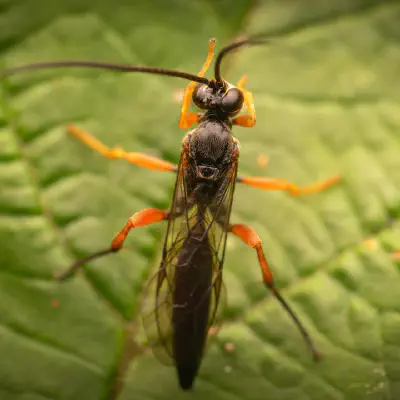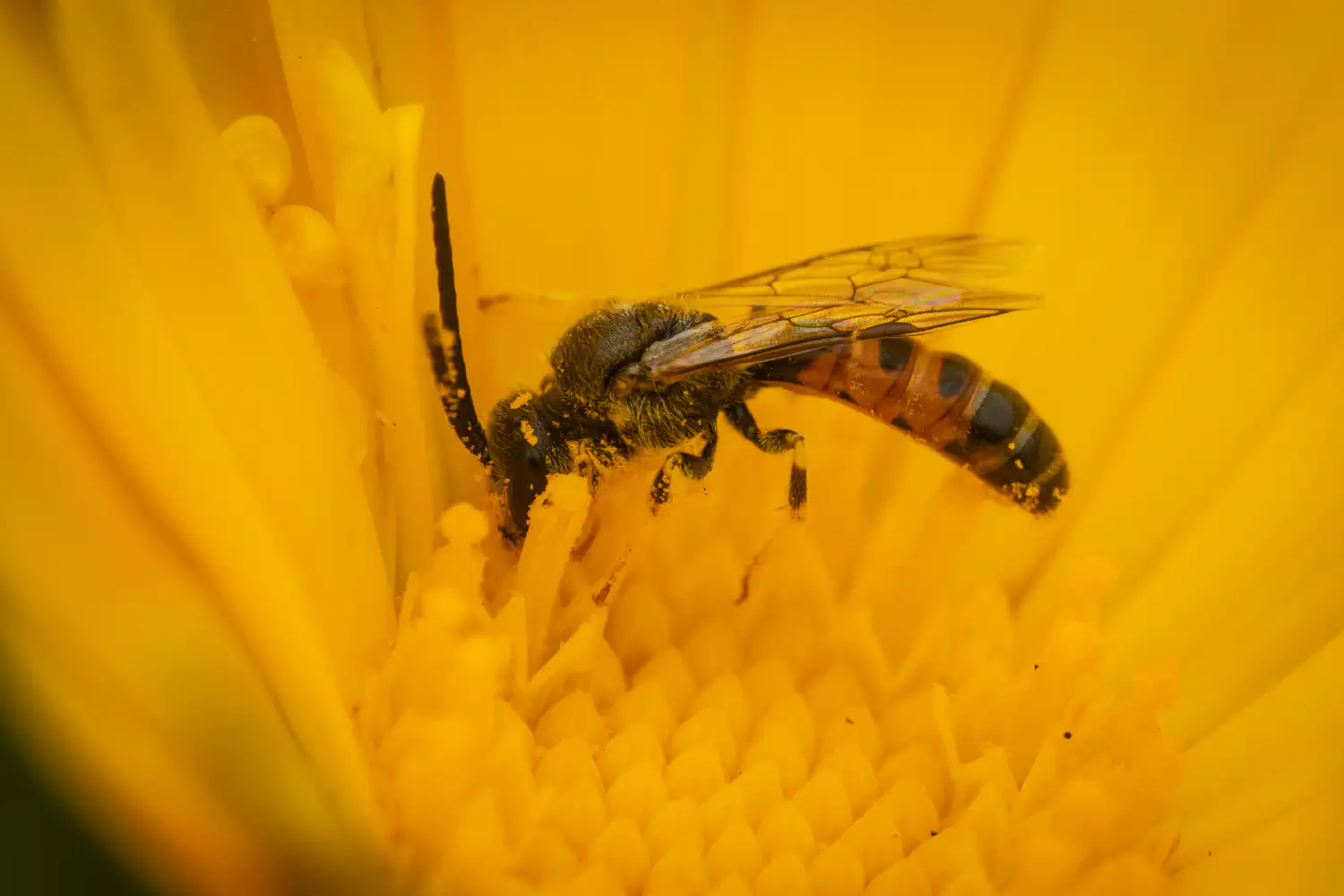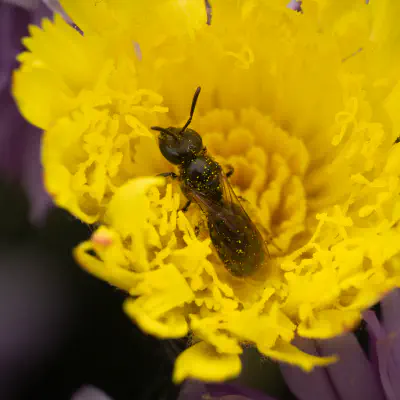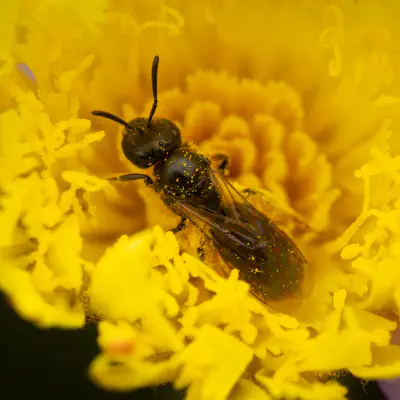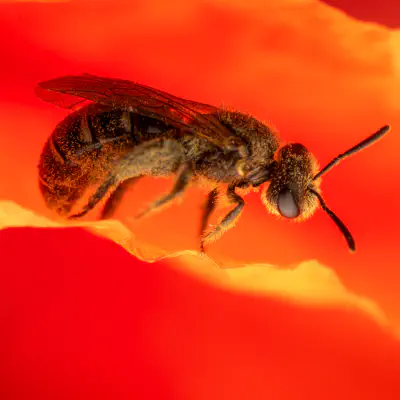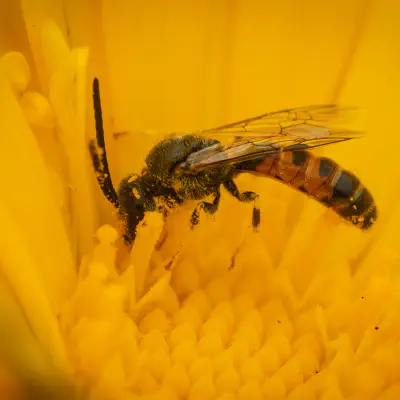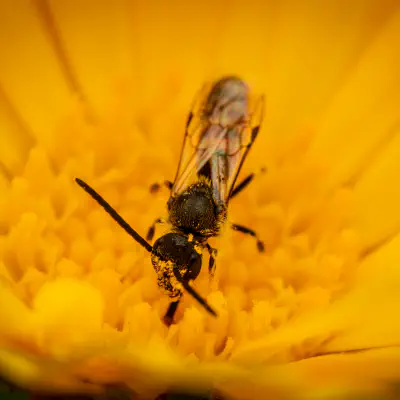Der tägliche Arthropode – Nr. 276 Nr. 276 |
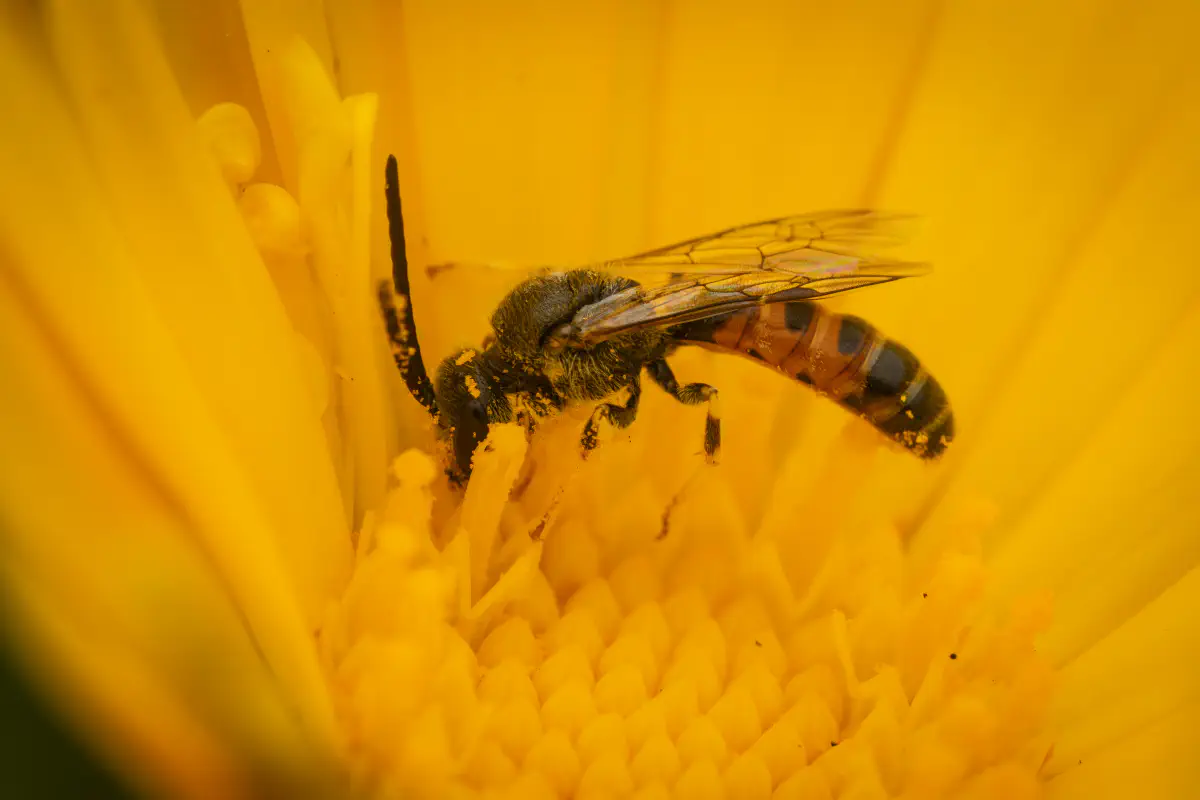
Lasioglossum ist die artenreichste Gattung der Bienen mit mehr als 1700 Arten weltweit in zahlreichen Untergattungen. Zusammen mit der Gattung Halictus werden die Lasioglossum-Arten im Deutschen als Furchenbienen bezeichnet. Die Arten sind sehr variabel in Größe, Färbung und Körperbau. Unter den ungewöhnlicheren Arten finden sich Kleptoparasiten, nächtlich fliegende und oligolektische (auf wenige Futterpflanzen spezialisierte). Die meisten Arten nisten im Boden, einige in verrottenden Baumstämmen.
Abstammungsdiagramm
%%{
init: {
'theme': 'base',
'themeVariables': {
'primaryColor': '#83a09c',
'primaryTextColor': '#212d2b',
'primaryBorderColor': '#fff',
'lineColor': '#fff',
'secondaryColor': '#006100',
'tertiaryColor': '#fff'
}
}
}%%
flowchart LR
classDef active fill:#fff
gliederfuesser("Stamm: Gliederfüßer"):::active
gliederfuesser-->insekten("Klasse: Insekten"):::active
insekten-->taillenwespen("Unterordnung: Taillenwespen"):::active
taillenwespen-->schmal-furchenbienen("Familie: Schmal- & Furchenbienen"):::active
schmal-furchenbienen-.->furchenbienen("Gattung: Furchenbienen")
schmal-furchenbienen-.->riesen-blutbiene(["Art: Riesen-Blutbiene"])
schmal-furchenbienen==>schmalbienen("Gattung: Schmalbienen"):::active
click furchenbienen href "/katalog/gliederfuesser/insekten/taillenwespen/schmal-furchenbienen/furchenbienen/"
click riesen-blutbiene href "/katalog/gliederfuesser/insekten/taillenwespen/schmal-furchenbienen/riesen-blutbiene/"
click schmalbienen href "/katalog/gliederfuesser/insekten/taillenwespen/schmal-furchenbienen/schmalbienen/"
click gliederfuesser href "/katalog/gliederfuesser/"
click insekten href "/katalog/gliederfuesser/insekten/"
click taillenwespen href "/katalog/gliederfuesser/insekten/taillenwespen/"
click schmal-furchenbienen href "/katalog/gliederfuesser/insekten/taillenwespen/schmal-furchenbienen/"
Das hier soll kein trockenes Lexikon sein. Den Rahmen für unsere Bilder bilden persönliche Geschichten und einfühlsame Artikel: „Den großen Ruhm knapp verpasst – aber ich freue mich trotzdem!“
Ein wohlgemeinter Brief
